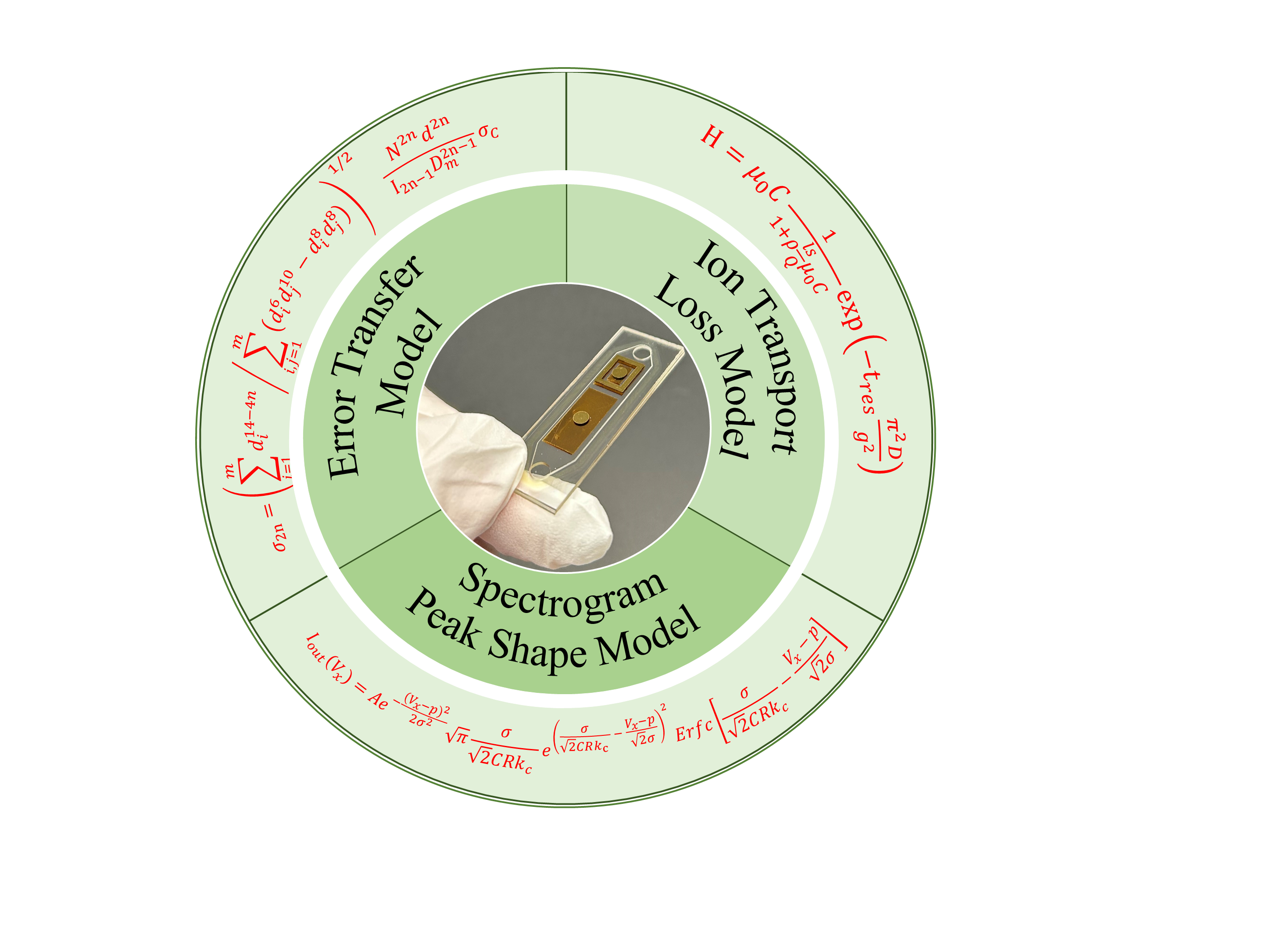
A research team led by Dr. CHEN Chilai from the Hefei Institutes of Physical Science of the Chinese Academy of Sciences, developed a new model for the shape of spectral peaks. This achievement completes a systematic foundation for High-field asymmetric waveform ion mobility spectrometry (FAIMS) detection theory, which is crucial for improving the accuracy of spectral analysis, assessing errors, and optimizing instrument design and parameters.
The findings have been published in Chinese Journal of Analytical Chemistry recently.
FAIMS is a powerful analytical technique that combines Micro-Electromechanical Systems (MEMS) technology with mass spectrometry. It stands out for its speed, sensitivity, miniaturization, and high selectivity. However, the complex operation and the coupling of multiple fields within the microspaces of FAIMS devices present significant challenges, making it difficult to develop a comprehensive detection theory.
In this study, by analyzing and modeling the complex motion of ions in the microspaces of FAIMS devices, the team derived and experimentally validated new models for ion transport loss, measurement error propagation, and spectral peak shape. With the construction of models, this research provides a more accurate understanding of FAIMS measurements.
Researchers discovered several new phenomena, including the asymmetric distortion of spectral peaks, the nonlinear dependence of detection signals on flow rate, and the strong correlation between characteristic detection parameters. Based on these findings, they proposed optimized methods.
“We achieved some improvements,” said Dr. WANG Han, member of the team, “including the use of a two-point non-uniform sequence for voltage distribution, replacing the traditional sawtooth waveform with a triangular waveform for scanning, and adopting Exponential Modified Gaussian (EMG) functions instead of Gaussian functions for more accurate peak fitting.”
These new models offered valuable theoretical guidance for designing FAIMS instruments and selecting the best operating parameters, according to the team.

Construction of the Fundamental Measurement Theoretical System of FAIMS. (Image by WANG Han)